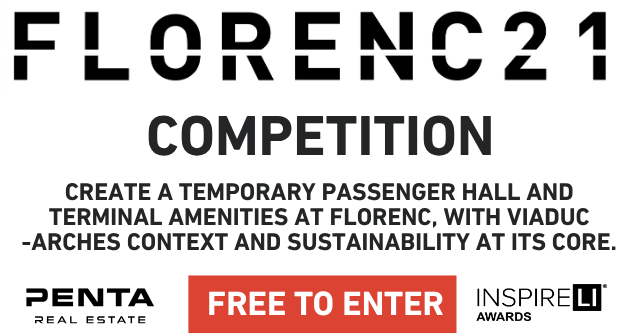Centrum chorvátskej kultúry, Jarovce
Idea projektu
Projekt rieši dlhodobú absenciu reprezentatívneho a funkčného priestoru pre chorvátsku menšinu žijúcu v Jarovciach, štvrti so silnými historickými väzbami na túto komunitu. Cieľom je vytvoriť kultúrne centrum, ktoré poskytne dôstojné prostredie pre každodenné stretnutia, podujatia a kultúrne vyjadrenie. Architektonický koncept je založený na racionálnej a striedmej priestorovej kompozícii s centrálnym átriom, ktoré spája jednotlivé programové celky. Budova slúži ako podporné zázemie pre vizuálne bohatú a expresívnu kultúru bez toho, aby jej konkurovala. Projekt tiež integruje udržateľné stratégie, ako je geotermálne vykurovanie, fotovoltaika, zber dažďovej vody a ekologicky uvedomelý výber materiálov.
Popis projektu
Projekt pozostáva z dvojpodlažného kultúrneho centra určeného pre chorvátsku menšinu v Jarovciach. Hlavný priestor zahŕňa multifunkčnú sálu, dielne, čitáreň a kaviareň, ktoré sú usporiadané okolo centrálneho átria, ktoré funguje ako spoločenské a priestorové jadro. Dispozícia je založená na racionálnom rastri s jasným rozdelením funkcií, čo umožňuje paralelné využívanie jednotlivých priestorov. Architektonickú štruktúru tvoria monolitické železobetónové steny s vonkajšou reliéfnou betónovou fasádou a energeticky účinné systémy vrátane geotermálnych tepelných čerpadiel, fotovoltaických panelov a riadeného vetrania s rekuperáciou tepla. Vonkajšie plochy sú upravené priepustnými povrchmi, stromami a pôvodnou vegetáciou na podporu mikroklímy a rozšírenie kultúrnych aktivít v exteriéri.
Technické informácie
Budova je postavená z monolitických železobetónových stien s vonkajšou vrstvou z reliéfneho betónu vytvorenou pomocou elastomérových debniacich vložiek RECKLI ako súčasť vlastnej sendvičovej fasády. Povrch je ošetrený impregnáciou RECKLI OS a antigraffiti ochranou Graffix, čo zabezpečuje dlhodobú trvanlivosť a vizuálnu kvalitu. Vodorovný nosný systém kombinuje predpäté betónové panely Spiroll a skryté kompozitné nosníky Peikko DELTABEAM. Nad multifunkčnou halou sú použité veľkorozponové oceľové väzníky z kruhových profilov. Architektonický koncept integruje komplexnú ekologickú stratégiu vrátane pasívnych aj aktívnych energetických systémov. Vykurovanie a chladenie zabezpečuje tepelné čerpadlo zem-voda napojené na 10 vrtov. Energetické potreby budovy zabezpečuje fotovoltaický systém s batériovým úložiskom. V celom interiéri sa používa riadené vetranie s rekuperáciou tepla, podlahové vykurovanie a stropné chladiace panely (systém Rehau). Celý systém sa riadi prostredníctvom systému riadenia budovy (BMS), ktorý dohliada na HVAC, osvetlenie, automatizáciu okien a snímače CO₂. Dažďová voda sa zbiera do retenčného systému a spracováva sa na opätovné použitie ako sivá voda v sanitárnych zariadeniach.
Projekt odovzdaný
26. 05. 2025Štítok
Rady študentom


